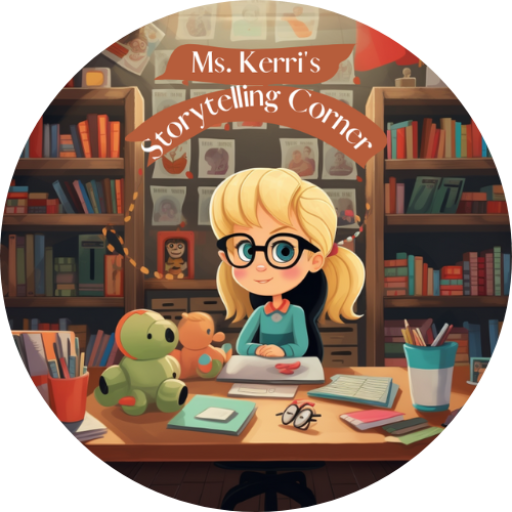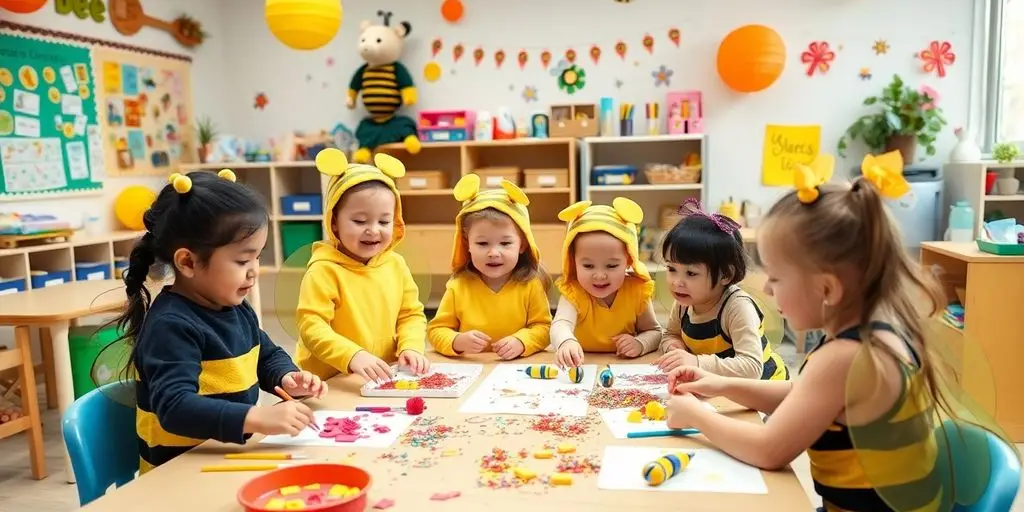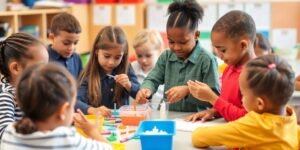Are you ready to buzz into a world of fun and learning with preschoolers? Bumblebee activities for kids are not just entertaining; they also provide a fantastic way to explore nature, science, and creativity. From hands-on crafts to engaging games, these activities will keep little minds busy while teaching them about the importance of bees and their role in our ecosystem. Let’s dive into some exciting ways to incorporate bumblebee fun into your preschool activities!
Key Takeaways
- Bumblebee activities for kids can enhance fine motor skills through hands-on crafts.
- Using sensory bins allows preschoolers to learn through touch and play.
- Incorporating bee-themed books and songs makes learning about bees engaging and fun.
- Role-playing as bees helps children understand their importance in nature.
- Movement games related to bees promote physical activity and social skills.
Hands-On Bumblebee Activities for Preschoolers

Engaging Sensory Experiences
Let’s get those little hands busy! Sensory play is a fantastic way to engage preschoolers, and a bee theme offers so many possibilities. Think about creating a honeycomb themed water table. You can add yellow food coloring to the water, throw in some plastic bees, and let them splash and play. It’s a simple way to bring the bee theme to life. Another idea is a bee-themed rice bin. Hide small plastic bees in the rice and have the kids find them. It’s like a treasure hunt, but with a buzzing twist!
Crafting Buzzing Bumblebees
Time to get crafty! There are tons of easy bee crafts that preschoolers will love. One idea is to make balloon bees. All you need are yellow balloons, black markers, paper wings, and some glue. Another fun craft is fingerprint bees. Dip their little fingers in yellow paint and press them onto paper. Add stripes with a black marker and some paper wings. These crafts are not only fun but also help develop fine motor skills. Here’s a simple supply list for the fingerprint bees:
- Yellow paint
- White paper
- Black marker
- Construction paper for wings
Interactive Bee Games
Games are a great way to get kids moving and learning at the same time. A simple game is “Bee Says,” a bee-themed version of Simon Says. Give instructions like “Bee says flap your wings” or “Bee says find some pollen.” You can also play a matching game with bee-themed cards. Print out pairs of bee pictures and have the kids match them up. It’s a fun way to work on memory and recognition skills.
I remember one time, we played a bee-themed version of musical chairs. Instead of chairs, we used hula hoops as “flowers.” When the music stopped, the kids had to find a flower to land on. It was chaotic, but so much fun, and they learned about bees in the process!
Bee-Themed Books and Songs

Incorporating Bee-Themed Books for Story Time
Story time is a great way to introduce any topic, and bees are no exception! Select books with bright pictures and simple stories about bees to keep the kids engaged.
- “The Very Busy Bee” is a good choice.
- “Bee: A Peek-Through Picture Book” is another option.
- After reading, ask the children questions about the story to check their understanding.
Reading aloud is a great way to get kids interested in bees. It also helps them learn new words and understand the world around them.
Singing Bee Songs and Rhymes
Music makes everything more fun! Singing songs and rhymes about bees is a fantastic way to get preschoolers moving and learning at the same time.
- “Bumblebee, Bumblebee” is a classic.
- “Here is the Beehive” is another good one.
- Don’t forget to add actions to the songs, like buzzing around or pretending to collect nectar.
Creating Musical Bee Movements
Time to get those little bodies moving! Turn bee learning into a dance party. Play some music and encourage the children to move like bees. They can buzz around, fly from flower to flower, or even do the waggle dance to show where the best nectar is. This is a great way to burn off some energy and learn about bee behavior at the same time.
| Movement | Description |
|---|---|
| Buzzing | Children move around the room making buzzing sounds. |
| Flying | Children flap their arms like wings and fly around. |
| Waggle Dance | Children wiggle their bodies to show where the flowers are. |
Bee Educational Activities

Overview of Honeybees and Their Role
Let’s get into the nitty-gritty of what makes honeybees so important! We can start by showing the kids some simple diagrams of a bee’s body. Point out the head, thorax, and abdomen. Talk about how bees eat – they love nectar and pollen! Explain how they use their long tongues to slurp up nectar from flowers. And, of course, we can’t forget to talk about pollination. It’s a big word, but the idea is simple: bees help plants make new seeds by carrying pollen from one flower to another. It’s like they’re little delivery workers for the plant world!
Bee Life Cycle Exploration
Time to explore how bees grow! The bee life cycle is pretty cool. It goes like this:
- First, there’s an egg.
- Then, the egg hatches into a larva (it looks like a little worm).
- Next, the larva turns into a pupa inside a cocoon.
- Finally, the pupa becomes an adult bee!
You can use pictures or even little toys to show each stage. It’s a great way to teach kids about how living things change and grow. Maybe even create a small bee activity for preschool to help them remember the stages.
Hands-On Pollination Activities
Let’s get those little hands busy with a fun activity that shows how pollination works! Here’s what you can do:
- Grab some Cheetos (the powdery kind) and a few silk flowers.
- Have the kids pretend to be bees and use cotton swabs to collect the “pollen” (Cheeto dust) from one flower.
- Then, they can fly to another flower and drop off the “pollen”.
It’s a messy, but super fun way to understand how bees help plants make seeds! Plus, it’s a great excuse to eat Cheetos (just kidding… mostly).
Bee Sensory Bin Activities
Bee sensory bins are a fantastic way to let preschoolers explore and learn through touch and play. They offer a hands-on way to understand things like measurement and volume, making learning fun and interactive. Let’s get into some ideas!
Hungry Bumble Bee Sensory Bin
This activity is all about letting kids “feed” the bumblebees! You’ll need a bin, water, yellow food coloring, and something to act as the “nectar,” like small pom-poms or yellow beads. Add some tools like turkey basters or small cups. The kids can use these to suck up the yellow water and pour it onto the pom-poms, pretending to feed the hungry bees. This is great for fine motor skills and introduces basic math concepts like volume and measurement.
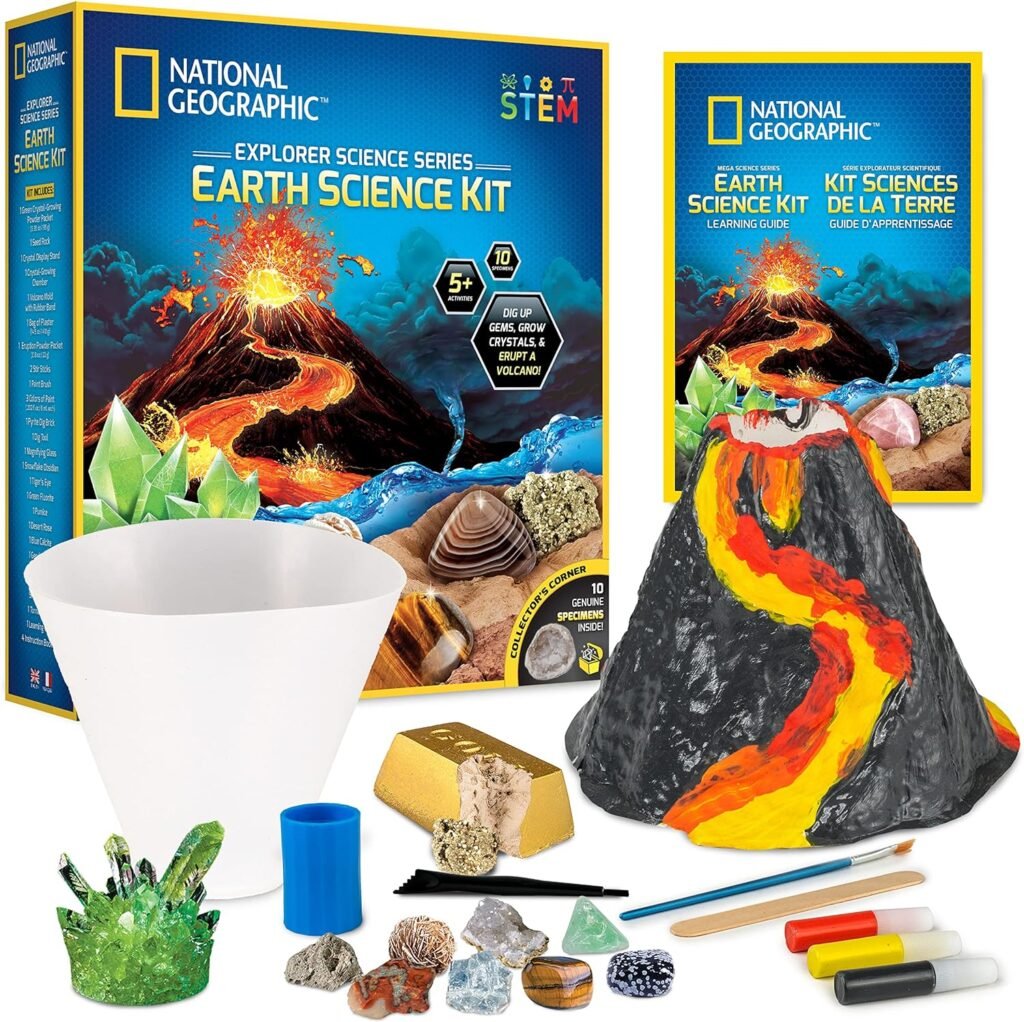
Building a Beehive with Play Dough
This activity combines tactile fun with fine motor skill development. Use honeycomb cereal and play dough to create a mini beehive structure. Children can practice their pincer grasp and hand-eye coordination while constructing their very own beehive masterpiece. It’s a great way to talk about the structure of a real beehive.
Exploring Textures and Colors
This sensory bin is all about different textures and colors that relate to bees and their environment. You could include:
- Yellow and black felt strips to mimic bee stripes.
- Small silk flowers in various colors.
- Honeycomb-shaped sponges.
- Small rocks or pebbles to represent the ground.
- Bubble wrap to add a unique tactile element.
This kind of bin encourages kids to explore different materials and talk about what they feel and see. It’s a simple way to engage their senses and expand their vocabulary related to textures and colors.
Bee Learning Centers and Role-Play

Bee learning centers and role-play areas are fantastic for letting preschoolers really get into the world of bees through interactive and imaginative play. These kinds of activities help kids with their social skills, cooperation, and give them a better understanding of the natural world. It makes learning fun and dynamic!
Setting Up Bee Learning Centers
Think about setting up different learning centers with things like silk flowers, bee counters, and crafting supplies. These centers can give kids hands-on experiences that reinforce concepts like counting, sorting, and recognizing patterns, all while keeping the bee theme alive. For example, you could have a math center where kids count bees on flowers, or a literacy center with bee-themed books and writing prompts.
Dramatic Play Center
Creating a beehive and nectar collection role-play area is super fun. You can use a big cardboard box to make a beehive and provide toy nectar and pollen. Kids can pretend to be bees, which helps them understand how bees behave and why pollination is important.
You could also add costumes like bee wings and antennae to make it even more engaging. This kind of play helps kids develop their imagination and understand the roles bees play in the environment.
Interactive Bee Role-Playing
Think about setting up scenarios where kids can act out different parts of a bee’s life. Here are some ideas:
- Pollen Collection: Have kids use small nets to “collect pollen” (pom-poms) from flowers and bring it back to the hive.
- Honey Making: Set up a pretend honey-making station where kids can mix yellow-colored water and pretend to package it into jars.
- Bee Dance: Teach kids about the waggle dance that bees use to communicate, and have them try to do it themselves. This is a great way to get them moving and learning at the same time.
Role-playing helps kids learn about bees in a really memorable way. It’s all about making learning fun and engaging!
Movement and Game Activities

Time to get those little bodies moving! Incorporating bee-themed movement and games is a fantastic way to make learning fun and burn off some energy. It’s all about getting them engaged and active while reinforcing what they’ve learned about bees. Let’s explore some ideas to get your preschoolers buzzing around with excitement.
Buzzing Around the Classroom
Transform your classroom into a giant hive! Have the children pretend to be bees, buzzing around and collecting pollen. You can set up different stations representing flowers, each with a different color or activity. Encourage them to fly from flower to flower, making buzzing sounds as they go. This activity promotes gross motor skills and imaginative play. You can even add some educational elements:
- Have them count the number of “flowers” they visit.
- Ask them to identify the colors of the flowers.
- Play music and have them freeze when the music stops, like bees resting in their hive.
Bee-Themed Obstacle Course
Create a simple obstacle course using items you already have in the classroom. This is a great way to get kids moving and working together. Here are some ideas:
- Tunnel Vision: Crawl through a tunnel (representing a honeycomb).
- Flower Power: Step over or around cones or markers (representing flowers).
- Nectar Collection: Carry a beanbag or small ball on a spoon (representing nectar) without dropping it.
- Wiggle Walk: Wiggle like a bee to the finish line.
Obstacle courses are great for developing coordination, balance, and problem-solving skills. Plus, they’re just plain fun! Make sure to supervise the children closely and adjust the course to their abilities.

Group Games for Social Skills
Group games are perfect for teaching social skills like cooperation, turn-taking, and following directions. Here are a couple of bee-themed ideas:
- Queen Bee Says: Play a variation of “Simon Says” with a “Queen Bee” giving the instructions. This helps with listening skills and following directions. For example, “Queen Bee says, ‘Buzz your wings!'”
- Honeycomb Hide-and-Seek: Hide a picture of a bee (or a small bee toy) and have the children search for it together. When someone finds it, they become the next hider. This encourages teamwork and problem-solving. You can even play a number recognition game to find the hidden bee.
- Bee Tag: One child is the “bee” and tries to tag the other children. When tagged, the children must freeze and make a buzzing sound until another child unfreezes them by tagging them. This is a fun way to get everyone moving and interacting.
Wrapping Up Our Buzzing Adventure
So there you have it! Using bee-themed activities can really turn learning into a fun adventure for preschoolers. These hands-on projects not only teach kids about the importance of bees but also spark their curiosity about nature and science. Whether you’re a teacher looking to add some excitement to your lessons or a parent wanting to make playtime educational, these activities are a great way to get kids buzzing with excitement. Let’s keep the fun going and inspire our little ones to explore the world around them!
Frequently Asked Questions
What are some fun activities to teach preschoolers about bees?
You can engage preschoolers with hands-on activities like making buzzing bumblebee crafts, creating bee-themed sensory bins, and playing interactive games that teach them about bees.
Why are bees important for the environment?
Bees play a crucial role in pollination, which helps plants grow. This process is essential for producing fruits, vegetables, and flowers, making bees vital for our ecosystem.
How can I incorporate music into bee learning activities?
You can introduce bee-themed songs and rhymes during story time. Singing and moving to these songs helps children learn about bees in a fun and engaging way.
What is the bee life cycle?
The bee life cycle includes four stages: egg, larva, pupa, and adult. Teaching kids about these stages through crafts or stories helps them understand how bees grow and develop.
How can sensory bins help preschoolers learn?
Sensory bins provide hands-on experiences that promote exploration and learning. They help children develop fine motor skills while teaching them about concepts like measurement and volume.
What are some group games related to bees?
Group games like a bee-themed obstacle course or buzzing around the classroom can make learning about bees exciting while also developing social skills and teamwork.
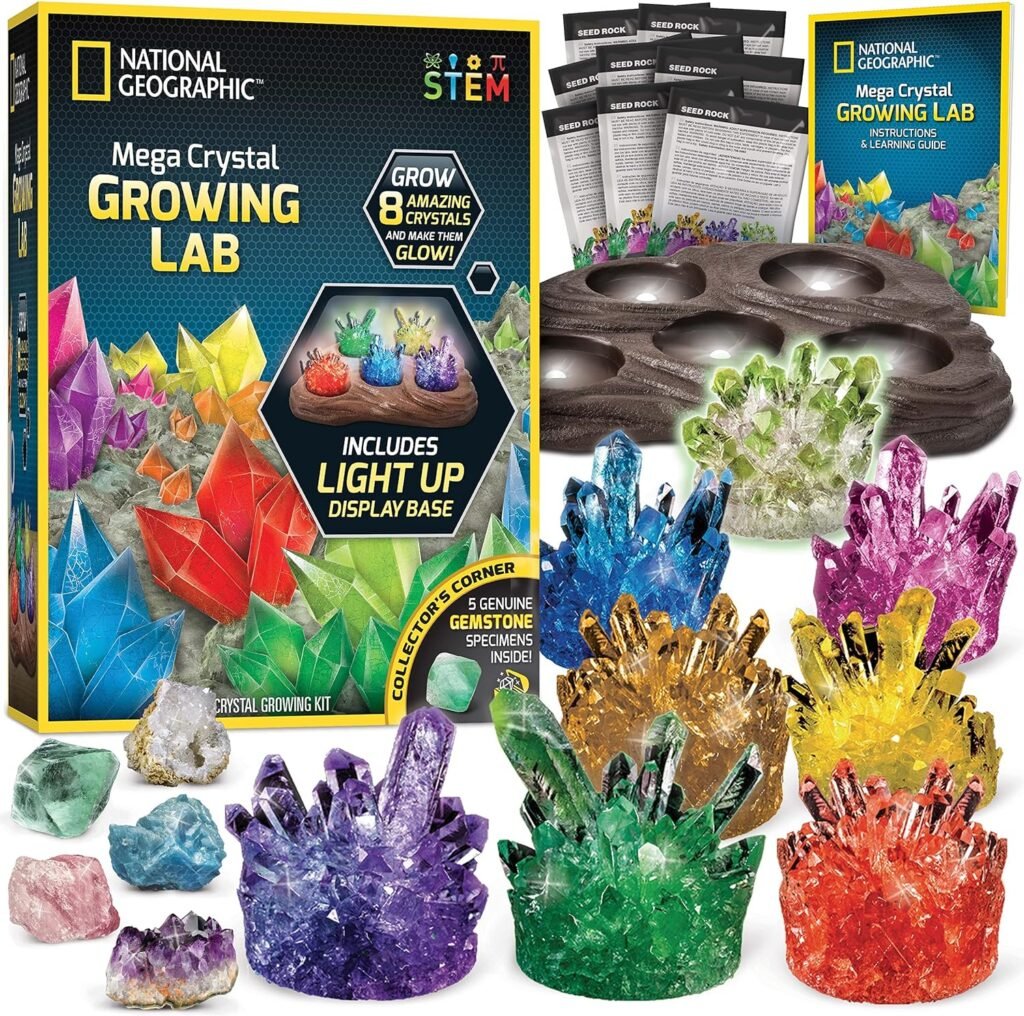

Ms. Kerri’s Corner provides a exciting virtual space for preschool learning. Through a variety of engaging activities, she exposes young minds to early math, literacy, science and social-emotional skills in a developmentally appropriate way. Centers for blocks, art, books and music allow children to explore hands-on learning at their own pace. Guided lessons subtly introduce number sense, letter sounds and narrative thinking. Careful observation gives insight into each child’s progress across domains. Viewers are also invited to participate, reinforcing that their ideas are valued. By making learning fun yet purposeful, Ms. Kerri lays the groundwork for future academic success while fostering creativity and imagination. Her program offers preschoolers valuable screen-based learning experiences.
